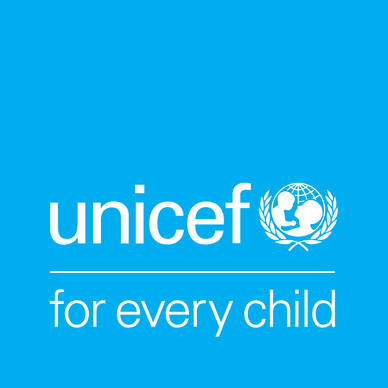Millions of the world’s poorest urban children are more likely to die young and less likely to complete primary school than their rural peers—UNICEF
New report demonstrates ‘urban paradox’— some of the poorest children in cities fare worse in well-being, education or health than poorest rural children
27 November 2018 – The poorest urban children in 1 in 4 countries* are more likely to die before their fifth birthday than the poorest children in rural areas. And the poorest urban children in 1 in 6 countries are less likely to complete primary school than their counterparts in rural areas, according to a new UNICEF report released today.
The report, Advantage or Paradox: The Challenge for children and young people growing up urban reveals that not all children in cities benefit from the so-called ‘urban advantage’ – the notion that higher incomes, better infrastructure, and proximity to services grant urban dwellers better lives. Instead, urban inequality, urban exclusion, and urban challenges to well-being, such as environmental and health hazards, can together result in an ‘urban paradox’ where many urban residents – including children – miss out and suffer more severe deprivations than their rural peers.
“For rural parents, at face-value, the reasons to migrate to cities seem obvious: better access to jobs, health care and education opportunities for their children,” said Laurence Chandy, UNICEF Director of Data, Research and Policy. “But not all urban children are benefitting equally; we find evidence of millions of children in urban areas who fare worse than their rural peers.”
The report identifies 4.3 million poor urban children who are more likely to die before age 5 than their peers in rural areas. It similarly finds 13.4 million poor children living in cities who are less likely to complete primary school than their rural counterparts.
The report analyses 10 indicators of child well-being in 77 mostly low and middle-income countries**. It confirms that in most countries, urban children fare better than rural children, on average. But these averages hide yawning inequalities in urban areas. Moreover, when children from urban and rural households with similar levels of wealth are compared, the urban advantage is no longer apparent.
“Children should be a focus of urban planning, yet in many cities they are forgotten, with millions of children cut-off from social services in urban slums and informal settlements, and exposed to environmental or health hazards due to overcrowding,” Chandy added. “Implementing solutions to urban development and planning is crucial to arrest these social and economic disparities.”
Up to 1 billion people are estimated to live in slums – hundreds of millions of them children. Africa and Asia are urbanising rapidly. By 2030, seven of the 10 largest cities will be in Asia, and Africa’s urban population is the fastest growing with an annual rate of growth of 3.7 per cent.
The report also highlights intra-urban inequities reflected in childhood outcomes which can be attributed to limited access to essential services. For instance, in half of the countries analysed, the poorest urban children are twice as unlikely to have access to basic sanitation services than urban children from the richest households.
In the absence of innovative ways of supporting the urban poor, inequity in childhood outcomes may widen and an increasing number of urban children will be shut out of overall progress.
The report calls for a number of actions from urban authorities and the global community:
- Making urban areas an integral part of programming for children, including the most vulnerable.
- Developing the capacities of inclusive urban planning at all levels of government—national, regional and local.
- Accelerating the development of urban systems of infrastructure and services to keep pace with current trends of rapid urbanization.
- Finding new solutions for mobilizing financial resources to improve urban systems and increase equity within urban areas.
- Investing in better data and better use of existing data to understand the full extent and dimensions of urban inequity.
###
Notes to Editors
* The poorest urban children are in households in the bottom 20 per cent of the wealth distribution. Child mortality was studied in 56 countries which represent 28 per cent of the global population. Primary education completion rate was analyzed in 77 countries which represent 51 percent of the world population.
**The 10 child indicators include; Access to water, sanitation, skilled birth attendance, birth registration, DPT3 immunization, primary education completion, HIV knowledge among boys and girls (15-24 years), stunting, and child mortality.
The report is based on an analysis of 80 surveys (Demographic and Health Survey, DHS, and Multiple Indicator Cluster Surveys, MICS) from 77 countries conducted between 2011 and 2016. These 77 countries represent 51 per cent of the global population (2018). Of the 77 countries in the sample, 31 per cent are low income countries (14 per cent globally), 40 per cent are lower middle-income countries (24 per cent globally), 27 per cent are upper middle-income countries (26 per cent globally) and 3 per cent are high income countries (36 per cent globally). The number of countries covered in the study varies across indicators due to availability and quality of the data.
Notes to Editors
For more information please contact:
Unicef UK Media Team, 0207 375 6030, [email protected]
About Unicef
Unicef is the world’s leading organisation for children, promoting the rights and wellbeing of every child, in everything we do. Together with our partners, we work in 190 countries and territories to translate that commitment into practical action, focusing special effort on reaching the most vulnerable and excluded children, to the benefit of all children, everywhere.
Unicef UK raises funds to protect children in danger, transform their lives and build a safer world for tomorrow’s children. As a registered charity we raise funds through donations from individuals, organisations and companies and we lobby and campaign to keep children safe. Unicef UK also runs programmes in schools, hospitals and with local authorities in the UK. For more information please visit unicef.org.uk

